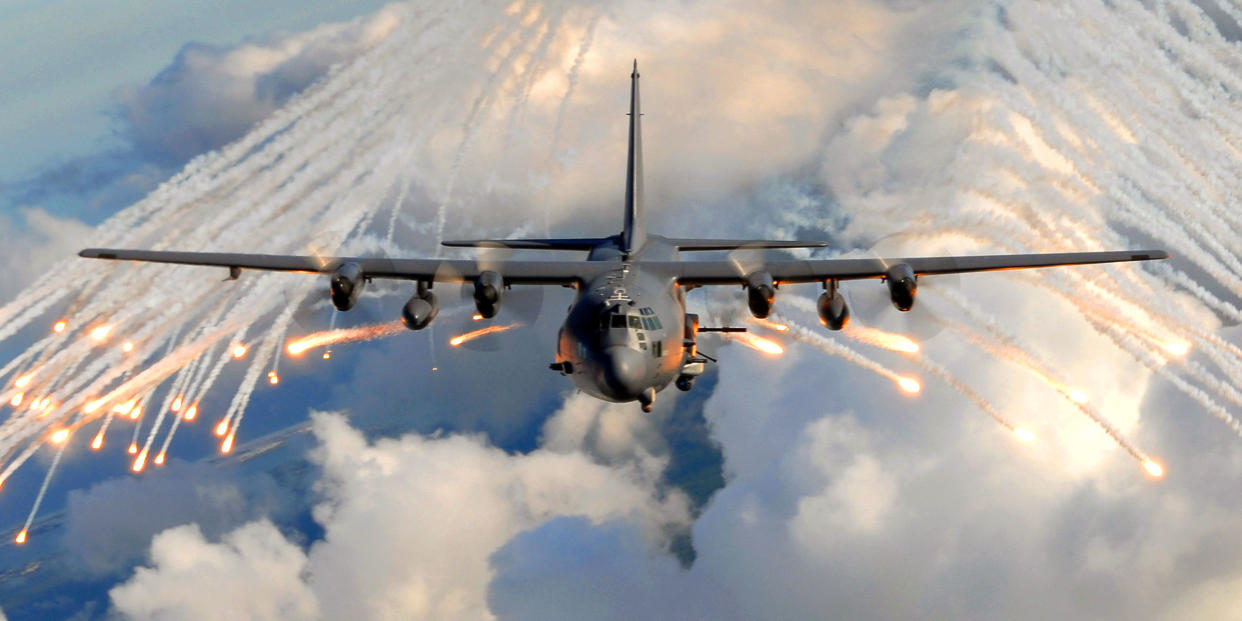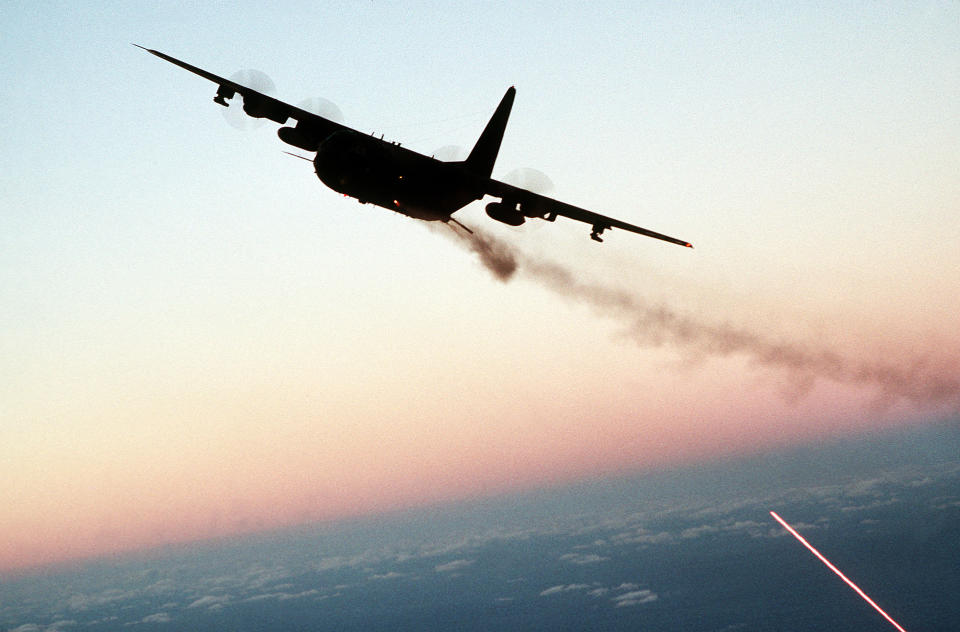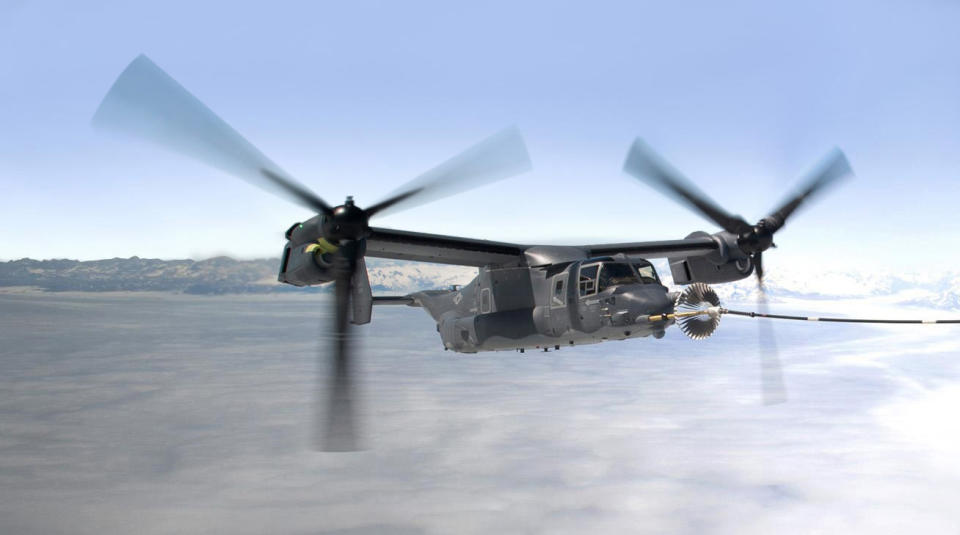The Planes of Air Force Special Ops

In 2009, Norwegian journalist Peter Refsdal embedded with the Taliban in Afghanistan during Operation Enduring Freedom, the United States' attempt to uproot al-Qaeda and remove the Taliban from power. One of his most interesting observations: The Taliban do not fear fighter jets.
"All the time there's jets, the sound of jets flying around, and the Taliban, they don't care about it," Refsdal told Anderson Cooper in a 2010 interview for CNN. "But there's one plane that scares them. ... It was the sound of this transport plane that scared them. And this is a plane equipped with a lot of heavy machine guns, even a cannon. And the thing is, the Taliban, they know that this gunship is used when there are some Special Forces operations. It's used as a support, air support during these kind of operations."
Refsdal is talking about the AC-130 gunship, a variant of the C-130 that is absolutely brimming with firepower. "It's the four fans of freedom, as we call it," Major Eric Forsyth, an HC-130J pilot, told Popular Mechanics.
Spooky
The AC-130 is only operated by Air Force Special Operations Command, or AFSOC, and the currently deployed model is the AC-130U "Spooky." The Spooky can unleash hell with a variety of weapons, including the M102 105-mm howitzer fired from the left rear-side door. It's the largest gun ever operated on a USAF aircraft.
"The psychological effects of the gunship-the Taliban just go home and wait until the gunship has gone away," says Forsyth.

The gunships provide close-air support for ground troops in heated battles and fly convoy escort missions through "threat-dense" areas, often at night. As iconic and effective as the Spooky is, AFSOC is poised to start replacing them with the next generation of gunship, the AC-130J Ghostrider. "It's going to be America's gunship for the next 50 years," says Colonel Thomas Palenske, commander of the 1st Special Operations Wing-the most deployed wing in the Air Force for two years running.
Palenske says of the new AC-130J: "You've got these huge HD screens and a couple of airmen back there that are working these sensors and weaponeering. Now, instead of having all these dials and steam gauges like the traditional C-130 does, you've just got five flat panel screens, and you can put anything you want on any of the screens. You can see the feeds in the back, you can put the flight instruments up on them, you can look down on a sight in the left side of the window."
That futuristic heads-up display and flight instrument system is going to be accompanied by a precision strike package (PCP) of laser- and GPS-guided munitions, along with the old-school cannons. "It's going to be spectacular," he says.
Handy Hercules
The C-130 Hercules is a do-it-all aircraft that serves a number of purposes for AFSOC beyond gunship close air support. The MC-130, for example, can be thought of as the versatile logistics aircraft, conducting airdrops of paratroopers, vehicles, equipment, and leaflets; providing aerial refueling for tiltrotors, helicopters, A-10s, and fighter jets; and acting as the infiltration and exfiltration aircraft for special ops units. The EC-130 is brimming with communications equipment to broadcast information as part of psychological operations, while the HC-130 that Maj. Forsyth flies is outfitted as an extended-range combat search and rescue ship.
These C-130 variants may be based on a 60-year-old design, but they are bursting with modern technology. "Bad weather at night is our bread and butter," says Major Jason Williams, an MC-130 pilot. "It's more fun flying at night. You have the whole sky to yourself."
The "nose" that protrudes from the front of the aircraft carries a variety of sensors and avionics systems, such as radar jamming equipment, precision navigation, and terrain-following/terrain-avoidance (TF/TA) X-band radar that allows pilots to fly the MC-130 as low as 250 feet, even at night.
"It's extreme instrument-rated flying," Williams says with a grin.
Not Just the C-130
And AFSOC flies a number of additional aircraft, including a variant of the V-22 Osprey more commonly seen on Marine Corps amphibious assault ships. However, AFSOC's version of the CV-22 has 588 additional gallons of fuel in wing tanks and terrain-following radar for long-range missions and low flying. An infrared countermeasure system protects the craft from heat-seeking missiles.

AFSOC pilots also sit the cockpits of C-146A Wolfhounds-modified Dornier 328s that looks like civilian planes, no doubt a convenient advantage when the Air Force "doesn't want to announce their presence." The U-28A, MC-12W Liberty, and unmanned MQ-9 Reaper all serve AFSOC as intelligence, surveillance and reconnaissance (ISR) aircraft. And the light, twin-engine C-145A is used for one of the most complicated missions of all: training foreign aviation forces.
"The airmen we've got right now, they're at least 100 times smarter than I was when I got in," Palenske says. "The raw minerals that we're getting from the community, from the civilian population of America… it's not that hard for them, they've already got it flowing through their veins."
You Might Also Like

